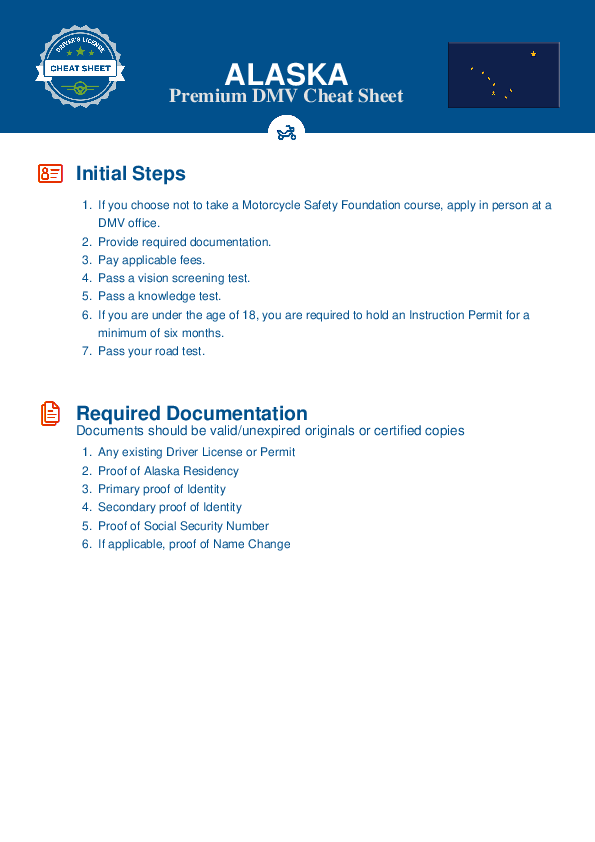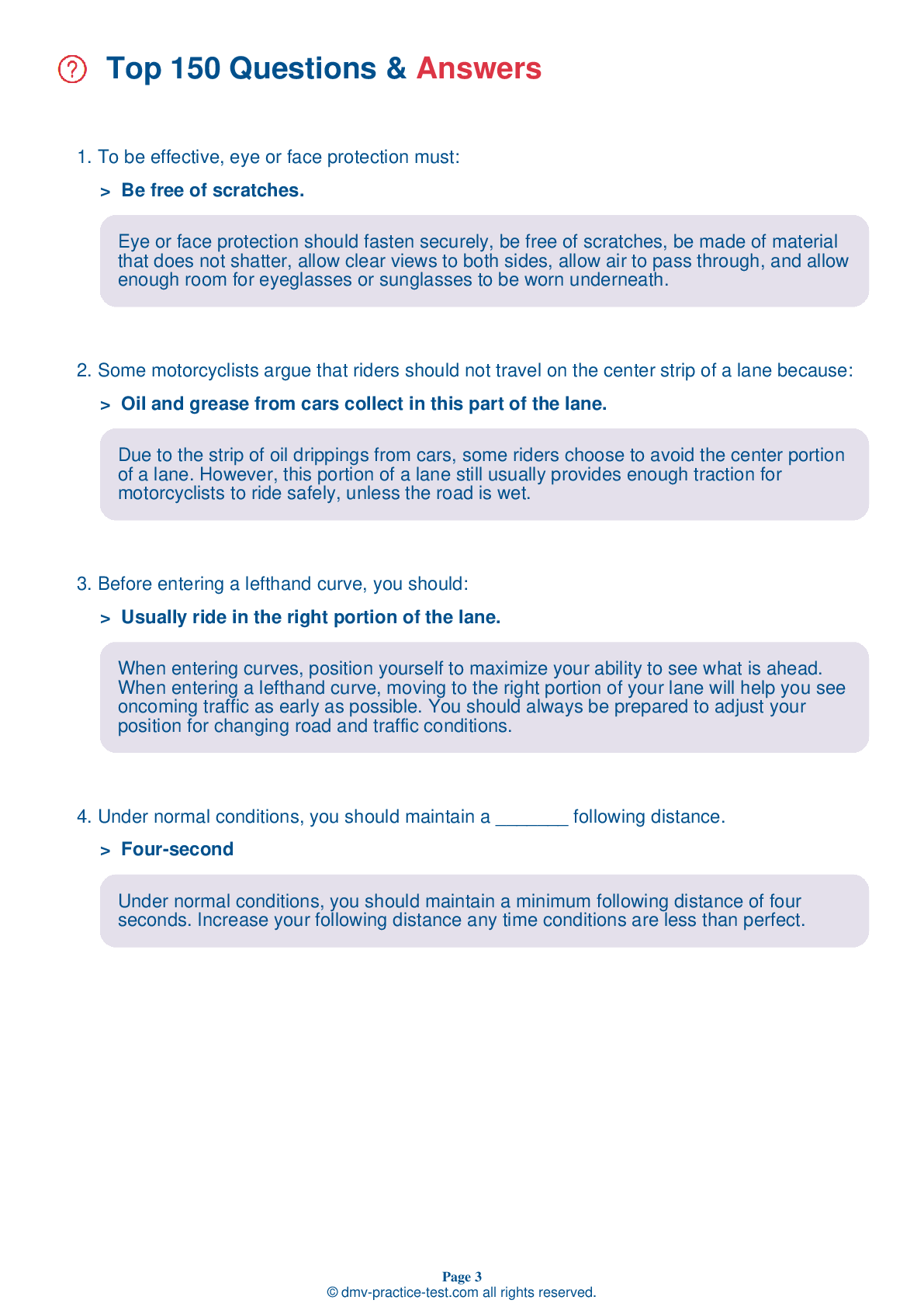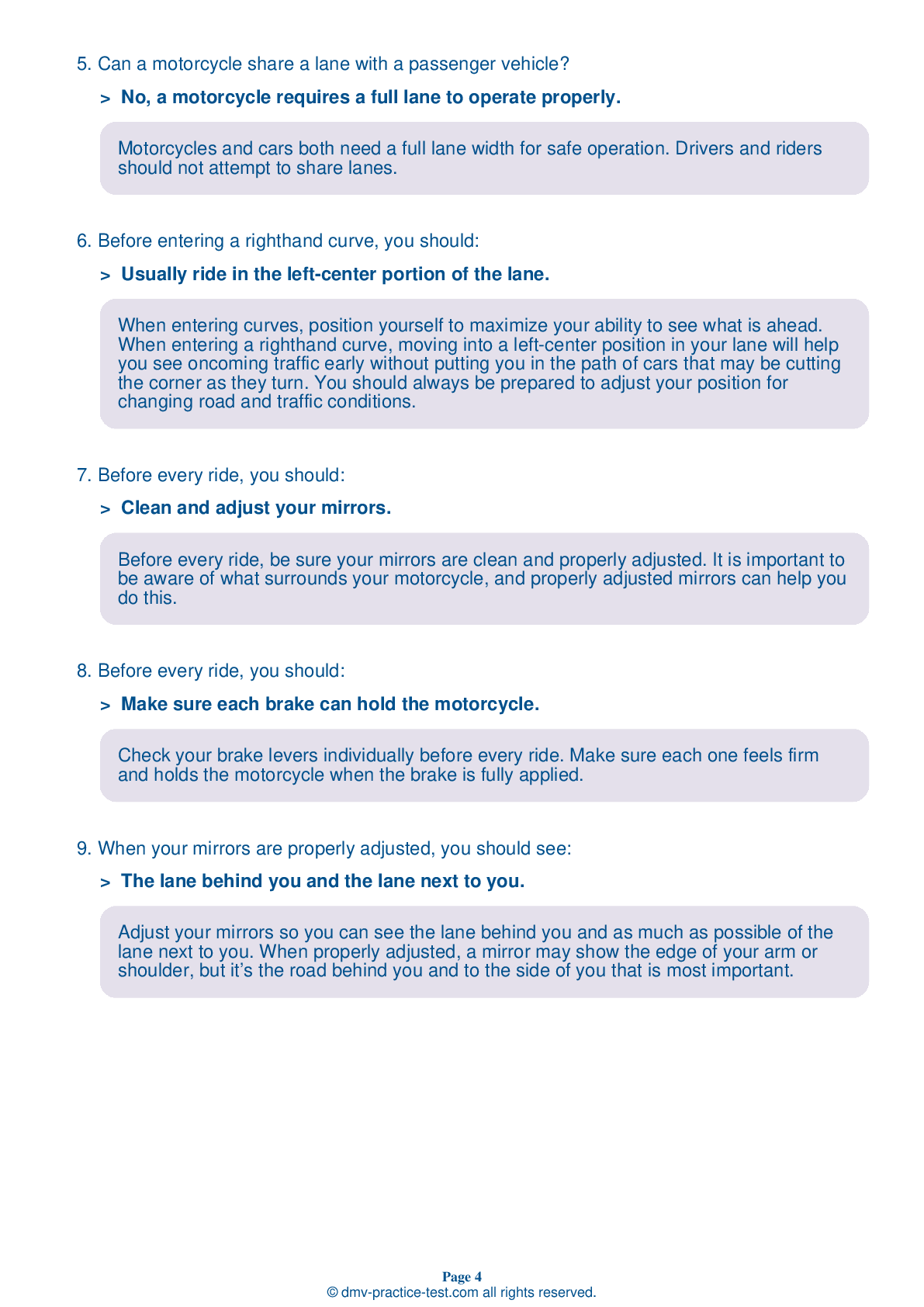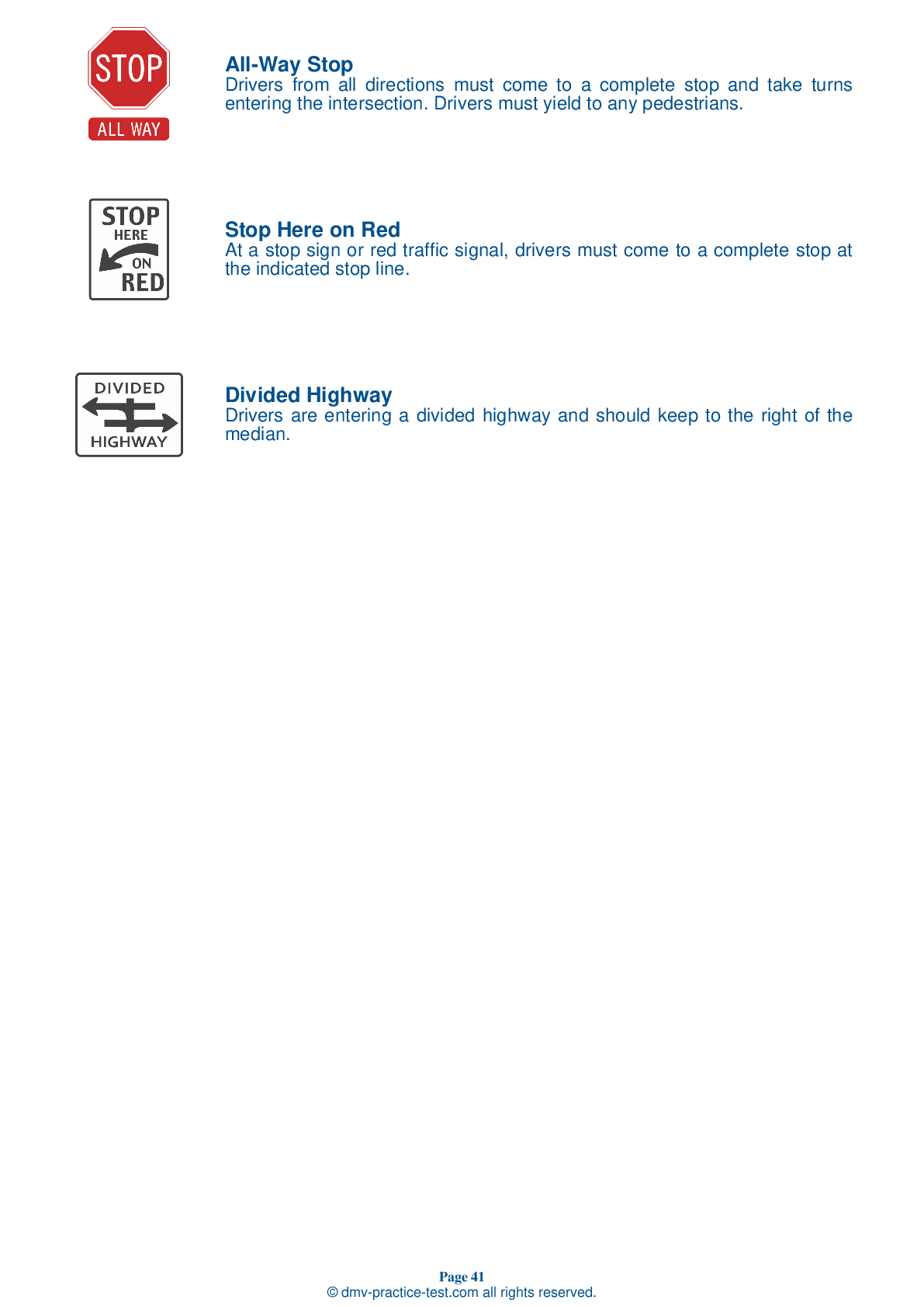Motorcycle Test | License AK 2025 | FREE Online Practice! #11
Take this FREE motorcycle test (license in AK 2025) to check your knowledge of the road rules. To improve your results, download a motorcycle handbook online, study theory, and practice for free on our website. Still worried about how to get a motorcycle license in Alaska in 2025? Check our website for more sample tests, train as much as possible, and boost your grades!
1 . To be effective, an eye or face shield must:
To be effective, an eye or face shield must be free of scratches; be resistant to penetration; allow clear views to both sides; fasten securely; permit air to pass through to prevent fogging; and allow room for eyeglasses or sunglasses, if needed.
2 . You should do a pre-ride inspection:
A small technical fault can have much more serious consequences on a motorcycle than on a car. To avoid these consequences, inspect your motorcycle before every ride.
3 . When being passed by another vehicle, you should ride:
When being passed, the center portion of the lane is generally the safest lane position for a motorcyclist. Riding on the side nearest the passing vehicle increases the risk of colliding with it. Riding on the side farthest from the passing vehicle can also be dangerous because it may prompt the driver to return to your lane before it is safe to do so.
4 . What does alcohol do to your riding skills and judgement?
Alcohol negatively affects many skills needed for safe riding, including your reaction time and ability to see clearly. It can also harm your judgment of speed and distance, lower your inhibitions, and make you more prone to taking chances.
5 . A way to lower the risk of being involved in a crash is to:
To reduce the risk of being involved in a crash, you should always ensure that you are visible to others. Communicate your intentions through proper use of your signals, brake light, and lane position. Maintain a space cushion around your motorcycle and consistently scan the road ahead of, behind, and next to your vehicle.
6 . When choosing a helmet, you will get the most protection by using a helmet that:
To ensure that you are getting as much protection as possible, choose a helmet that meets U.S. Department of Transportation (DOT) and state standards. Helmets should fit snugly all the way around.
See the exact questions that will be on the 2025 Alaska DMV exam.
99.2% of people who use the cheat sheet pass the FIRST TIME
Jeneen was tired of paying $5/gallon. She got herself a scooter that required the motorcycle license. She studyed the motorcycle test cheat sheet and passed her test the next day!
Christopher tells us how he knew nothing prior to obtaining the motorcycle study guide, and he only got one question wrong because he clicked on the wrong answer by mistake.



